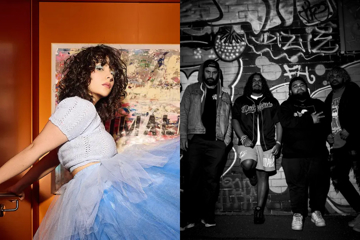It's Official: Report Proves NSW Is The Live Music State
Sorry, Victoria
A new report detailing the value of Australia's live music industry has shown that Victoria's claim to the title of 'the Live Music State' may be in peril after it was revealed that — excluding Victoria and South Australia — New South Wales generates more money in terms of net benefits to the industry than every other state and territory combined.
In the Economic & Cultural Value Of Live Music In Australia 2014 report, NSW yielded a whopping $3.62 billion in net benefits for the state last year, about $130 million more than the combined efforts of Queensland ($1.95 billion), Western Australia ($1.16 billion), Tasmania ($155.8 million), the ACT ($140.7 million) and the Northern Territory ($73.4 million, for a total of $3.49 billion).
key points
- NSW, Victoria and QLD generate 79% of nation's net financial benefits from live music
- National attendance reached 49.2 million in 2014
- Tasmania boasts most modern venues, with average building age of only four years, but can't match Melbourne for sheer number of gigs
- Bars, clubs and small venues remain most popular live-music space of choice around the nation, but house parties are on the rise
Victoria wasn't far off the pace set by nation-leading NSW, however — the south-eastern state still managed to put up $2.83 billion in net benefits — with next-door neighbour South Australia also putting in a healthy effort, raking in $713.1 million from its live music industry. However, the top two states combined are responsible for a simply massive 61% of the total net financial benefit to the country — which rockets to 79% once Queensland is brought into the mix.
Don't miss a beat with our FREE daily newsletter
Of course, the entire point of the research report is to demonstrate live music's intangible, non-financial value as well as its ability to fatten the economy, and if nothing else, the Live Music Report shows that the industry's cultural and social reach is a considerable one.
As one might expect, the nation's total attendance — about 49.2 million in 2014, according to the report's "conservative" estimate — reflects the states' respective profitability levels, with NSW and Victoria hitting more than 10 million each (16.2 million and 12.6 million respectively), and QLD, WA and SA all landing between the magic million mark and the frontrunners, respectively seeing 9.4 million, 5.3 million and 3.5 million punters through the doors — and that's just for contemporary gigs, to say nothing of the money generated by "classical, opera, musical theatre, other festivals and special events" — all of which were excluded from the measurements.
Thankfully, the states are pretty well equipped to receive that sort of volume of punters, too. Melbourne currently looks the healthiest, on average, with a median live music capacity of 190, a median venue capacity of 273, a median monthly event calendar of 18, and an average age of 4.75 years per venue, giving it — overall — probably the strongest result against a city such as Sydney (which has more median live music and venue capacities at 194 and 270 apiece, but one fewer events per month and an average venue age of six years), while Adelaide offers a double-edged sword, offering a median venue capacity of 280 — 80 more than Hobart — and 16 average events a month, but only managing a median live music capacity of 150 — 40 less than Hobart — in its average 10.5-year-old venues, about six-and-a-half years older than the spaces in Tassie.
That's assuming that the gig is even taking place in a traditional "venue" as we know it; according to the report, while bars/clubs and small venues remain the pace-setters for live music attendance, a growing number of people are hitting up theatre and stadium shows, festivals, and even the old humble house show. Small venues dominate in ACT and WA, where a respective 97% and 92.2% of respondents indicated they had attended live music at such a space (the lowest is 80%, in both NT and Tasmania), while 90.9% of ACT respondents and 91.8% of South Australian respondents saw live music at a bar/club.
Although the NT once again offers up the lowest hit-rate for the category — 70%, a little behind next-lowest club-goers QLD, at 80.2% — they're clearly into their festivals, with 80% of northern respondents (and 81.8% in the ACT) indicating they'd seen live music at a festival in 2014, compared with Tasmania, Queensland and SA, which are a little behind but still above 70% — 70.6%, 72.3% and 73.5% — and an apparent drop-off in WA, Victoria and NSW (63.3%, 66.9% and 67.8% respectively).
Somewhat astonishingly, 60% of NT respondents — so well over half — indicated they'd been to a house show in 2014 (compared with floor-state QLD, who got out to someone else's place 31.1% of the time) — which may explain their reticence to hit up a stadium gig, where only 40% of respondents answered in the affirmative. Theatre gigs seemed universally average, however, with all states falling between 40% and 67% in terms of positive responses.










